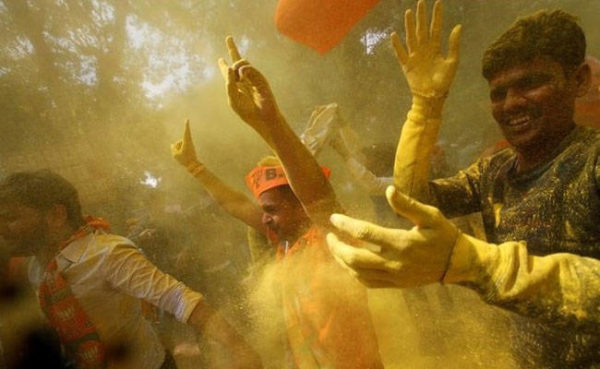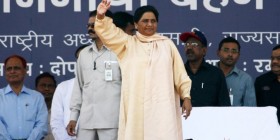The ‘project’ which was started by LK Advani and Kalyan Singh over two-and-half decades back has finally come a full circle. The state of Uttar Pradesh, a veritable cauldron of humanity, has turned saffron and how! It has defied expectations of pundits, casual observers and many politicians who were busy getting an alternative plan in place bracing for a hung mandate. BJP has won a thumping majority currently leading in 309 seats out of 403. The only time, BJP got majority was way back in 1991 when Kalyan Singh became CM. Babri happened shortly afterwards and Indian politics was never the same, with BJP on a higher trajectory but paradoxically not doing well enough in India’s most populous state. Primarily, parties with strong caste bases managed to get power by tagging in incremental voters. The fact that Amit Shah and Narendra Modi have been able to break that cycle (pun intended) is worth a detailed discussion.
BJP undoubtedly enjoyed an advantage from its dominant showing in the 2014 Lok Sabha elections when it garnered 44% votes in Uttar Pradesh. But some of the factors which made work difficult for BJP included no big state leader for the party, Akhilesh’s pro-development image in the media and SP-Congress alliance. It could have upset party’s apple cart yet BJP maintained a significant vote share to pull through. BJP despite such hurdles ended up with a performance matching its victory in 2014.
Here are the main reasons behind BJP’s victory:
Firstly, the party’s greatest strength remains the Prime Minister. Modi took a brave risk of over exposure and went for the jugular including camping out in Varanasi in the last three days of campaigning. For a party which believes in karyakartas ensuring the last mile linkage, it is embarrassing that the Prime Minister himself has to canvas so aggressively. But that’s what is working for BJP currently and the party will not go looking for alternative tactics so easily. BJP managed to win pan Uttar Pradesh, even in SP strongholds. A clear indication that people went behind caste consideration and voted for PM Modi.
Secondly, the organisational skills of Amit Shah made BJP a much leaner and focused unit. He ensured that caste combinations were in place properly. From making Keshav Prasad Maurya the state chief to not announcing a CM face, and propping up Yogi Adityanath and Rajnath Singh’s name as a likely candidates in the media, BJP kept every social coalition happy. Its goal was to get maximum from the upper castes and also a sizeable amount of voters from non-Yadav OBCs and non-Jatav Dalits. A small alliance with caste-based parties like Apna Dal meant BJP enjoyed the edge and managed to largely unite the Hindu votes under one umbrella.
Thirdly, BJP has used a potent mixture of Hindutva and development to make its poll pitch in UP. Several central schemes and projects (including AIIMS in the underdeveloped Gorakhpur) have been promised by the Union Ministers and work is underway in some. With PM Modi himself representing Varanasi, many parts of the states are flush with central funds, with the LED scheme a great hit. Combining this general goodwill, BJP has accused SP government of only working for some specific communities (read: Yadavs and Muslims). PM himself made the allegation and it was percolated to the ground by rabble rousers like Yogi Adityanath and Vinay Katiyar. The result is for everyone to see. It also swept the Jat belt much to the amazement of political pundits who thought RLD will benefit from community’s anger against BJP. But final result shows Jats finally decided to again repose faith in BJP like 2014.
Fourthly, the party fully took advantage of the SP pari-war. Not only did it demotivate cadres in several seats, in many places Congress votes got transferred to BJP, where people were not exactly inclined to give Akhilesh a second chance. With Mulayam staying out of his own Lok Sabha seat of Azamgarh, and barely attending three rallies, it was clear that the wounds were still raw and cost the party dearly. The Congress has again dragged down an ally and is fast becoming a serious liability for its ‘secular’ friends. Congress is currently ahead in eight seats only out of 105 it contested. Akhilesh conceding so many seats to Congress might have been the greatest miscalculation in this election.
Fifthly, a complete collapse of BSP votebank despite Mayawati’s effort meant the entire OBC and Dalit votebank except the Jatavs voted massively for BJP. On the other hand, BSP managed to split the Muslim vote helping BJP pick up more seats. Maybe a combined opposition could have mounted a credible challenge to PM Modi’s BJP. But in absence of any such Bihar style secular front, it was always BJP’s election to lose. And Amit Shah and Narendra Modi are too seasoned a player to pass up such opportunities.






Leave a reply